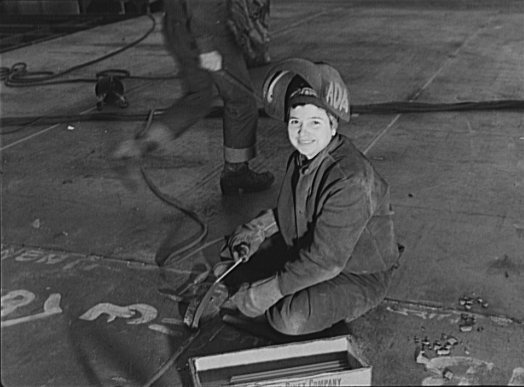
On April 29, 1943, the special representative to the National War Labor Board issued a report, “Retroactive Date for Women’s Pay Adjustments,” setting forth provisions respecting wage rates for women working in war industries who were asking for equal pay.
President Franklin D. Roosevelt established the National War Labor Board by his Executive Order 6017 on January 12, 1942. The Board mediated wartime labor disputes and consisted of representatives from business, organized labor, and the public.
Later that year, women asked the National War Labor Board that they be paid the same amount as men would be paid for the work they were doing. This special representative’s report sets forth provisions respecting wage rates for women.
A directive issued by the board in September 1942 stated that “rates for women shall be set in accordance with the principle of equal pay for comparable quantity and quality of work on comparable operations.”
But the struggle for equal pay continues.
When the Equal Pay Act was signed into law by President Kennedy in 1963, women were earning an average of 59 cents on the dollar compared to men.
In December 1977, eight women went on strike against Citizens’ National Bank in Willmar, Minn. Their goals were straightforward. They wanted equal pay for equal work. They wanted equal treatment. They never got what they wanted. Every year, high school and college classes invite members of The Willmar 8 to speak. “We don’t go out looking for opportunities, they come to us.” In the classroom, students can’t believe what they hear.” Read more about this here.
In 1999 the AFL-CIO and the Institute for Women’s Policy Research reported that the average working family loses more than $4,000 each year because of the wage gap between women and men and overall America’s working families lose a staggering $200 billion each year.
That same year, the national AFL-CIO launched a campaign to introduce new equal pay legislation in over 22 states. The legislation was designed to close the wage gap between men and women as well as workers of color.
Earlier this month on Equal Pay Day 2013, a woman worker’s median wage was only 77 cents for every dollar of a man’s with the same qualifications and background. That disparity is even greater for African-American women and Latinas.
According to Debra Ness, president of National Partnership for Women and Families (NPWF): “A punishing wage gap persists for women in every corner of the country, We must do more to close the wage gap, which is present in every industry, and affects workers with every level of education.”
Republican filibusters have killed equal pay bills every time that have come up in the Senate.
But a survey by the Bureau of Labor Statistics earlier this year shows one real equalizer in pay between men and women is the union contract.
Photo: “Wendy Welder” pushes back her helmet during a moment’s pause from her welding job at the Richmond shipyard in California, February 1943. Wikimedia Commons










